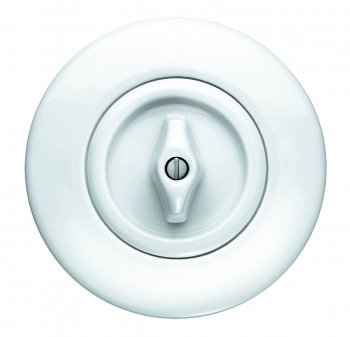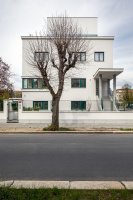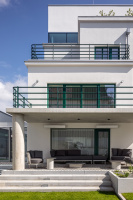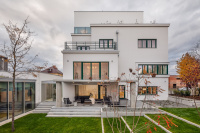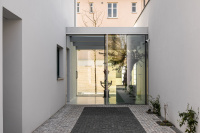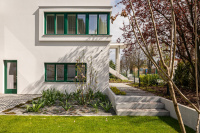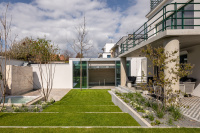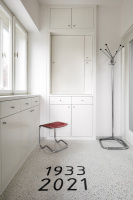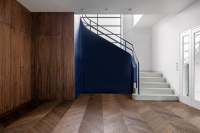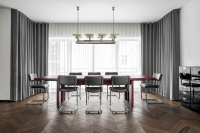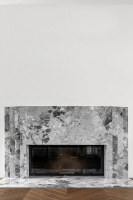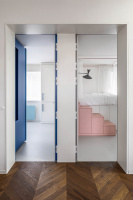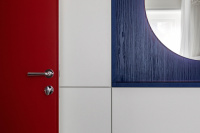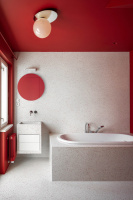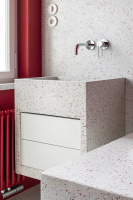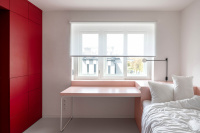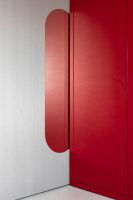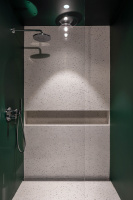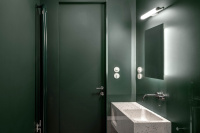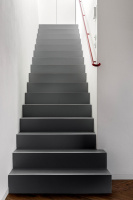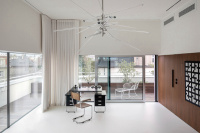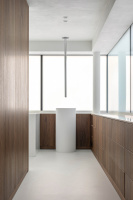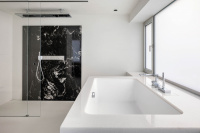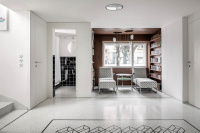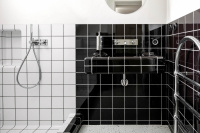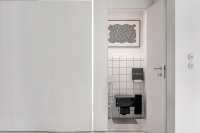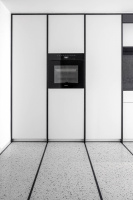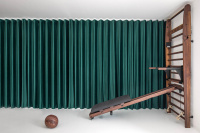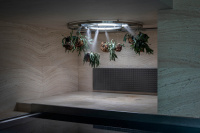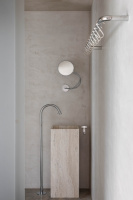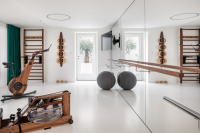WELLNEROVA 19, OLOMOUC
|

This architectural gem from 1933, which according to some sources may have come from the pen of Bohuslav Fuchs himself, found its saviors in the form of conscious new owners literally in 5 minutes to twelve. They decided on a thorough reconstruction, which would take into account the demands for the highest standard of modern living for a large family of eight, but at the same time would respect the original atmosphere of the 1930s. The house therefore underwent a fundamental reconstruction, which is so inspiring and successful that it made it to the finals of the prestigious Architects Grand Prix – National Architecture Award 2022.
The building has already undergone one reconstruction - in the nineties, however, it did more harm than good and completely stripped the villa of its functionalist identity. At that time, the layout of the house was fundamentally changed, the construction of a large terrace represented a major visual intervention in the original form. The building was insulated and painted a distinctive blue color. On the other hand, the recent renovation, led by the studio PAB architectural office, brought the building a cleansing from the insensitive interventions of the 90s and a return to the original concept of functionalism, but also the enlargement of the entire house with regard to the size of the family. The oversized terrace was removed and replaced with a more subtle one. The house was enlarged by adding one floor. The new superstructure is visually separated from the lower part by a continuous glass strip, the color of the superstructure is unified with the house. All the structures of the original house were rebuilt with solid brick. The garage also received changes. The original garage level with the fence was removed and newly moved to the level of the house. The mass of the garage recedes in a terraced manner so that it has the smallest possible volume in the garden. All levels of the terraces are equipped with a green roof and thus naturally follow the landscaping of the garden. The garage is connected to the main house by a glass neck and behind it hides a wellness area with a swimming pool and sauna as well as the necessary home technology. Work on the villa continues even now, when the cellar is being converted into a wine cellar.
|
|
If the exterior of the renovated villa puts a smile on your face, then you will be delighted with its interior. The perfect fusion of original functionalist elements and current trends and requirements for modern living is signed by Jana Trundová from the MIMOKOLEKTIV studio. "I approached the interior design with respect for the functionalism and applied art of the 1930s. After all, designing the interior of the house under which Bohuslav Fuchs may have been signed caused a certain sense of responsibility in me from the beginning. I put the greatest emphasis on detail and atypical, author's production. I was looking for connections between my work and functionalism. I implemented elements of minimalism into the villa and subsequently intentionally disrupted their harmony, experimented and created various surprises," explains the interior designer. In the villa you will find a whole range of rich colors and distinctive stone structures. The green color symbolizes the transition of green from the exterior to the interior. The color red is the color of the owner's temperament and generally the color of family warmth, while pink is the favorite color of girls. The ground floor of the villa is kept in black and white.
 |
|
The selection of switches and other control elements also fits into the concept of reviving the atmosphere of functionalism in the interior. The choice fell on porcelain rotary switches and sockets berker serie 1930 and berker R.classic made of high-quality white plastic from the company Hager, to whose portfolio berker switches and sockets belong. Depending on the context, both black and white switches were selected for individual parts of the interior. Although they hide the latest technology and precise workmanship under the retro exterior, it is already clear from the name of the berker series 1930 design series that these wiring control elements proudly refer to the legacy of the 1930s in their appearance. "It's no wonder that berker series 1930 rotary switches, whether in porcelain or bakelite design, were also used in such historic gems as the Tugendhat villa, the cubist Bauer villa or the monasteries in Český Krumlov," calculates Thomas Grund, director of Hager in Czech republic. The berker R.classic switches were chosen for the upper floors in the bathrooms and children's rooms. Although their rotary mechanism refers to the retro rotary switches of the First Republic, they bring their appearance to the 3rd millennium. A more modern way of controlling lighting and electrical devices is made possible by the TS sensors used in the parents' bedroom, also from the Hager company. All Hager wiring devices for the interior were supplied by the MONOBRAND design store.
"I designed the interior in such a way that everything flows and maintains a uniform line across the large scale of space and the number of floors. Thinking about the functioning of such a large family was a big topic for me, and I am glad that the result of the project is also a reflection of the unique synergy of cooperation."
- Jana Trundová (mimokolektiv)









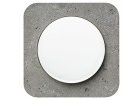









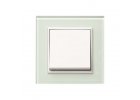
.png)



.png)














